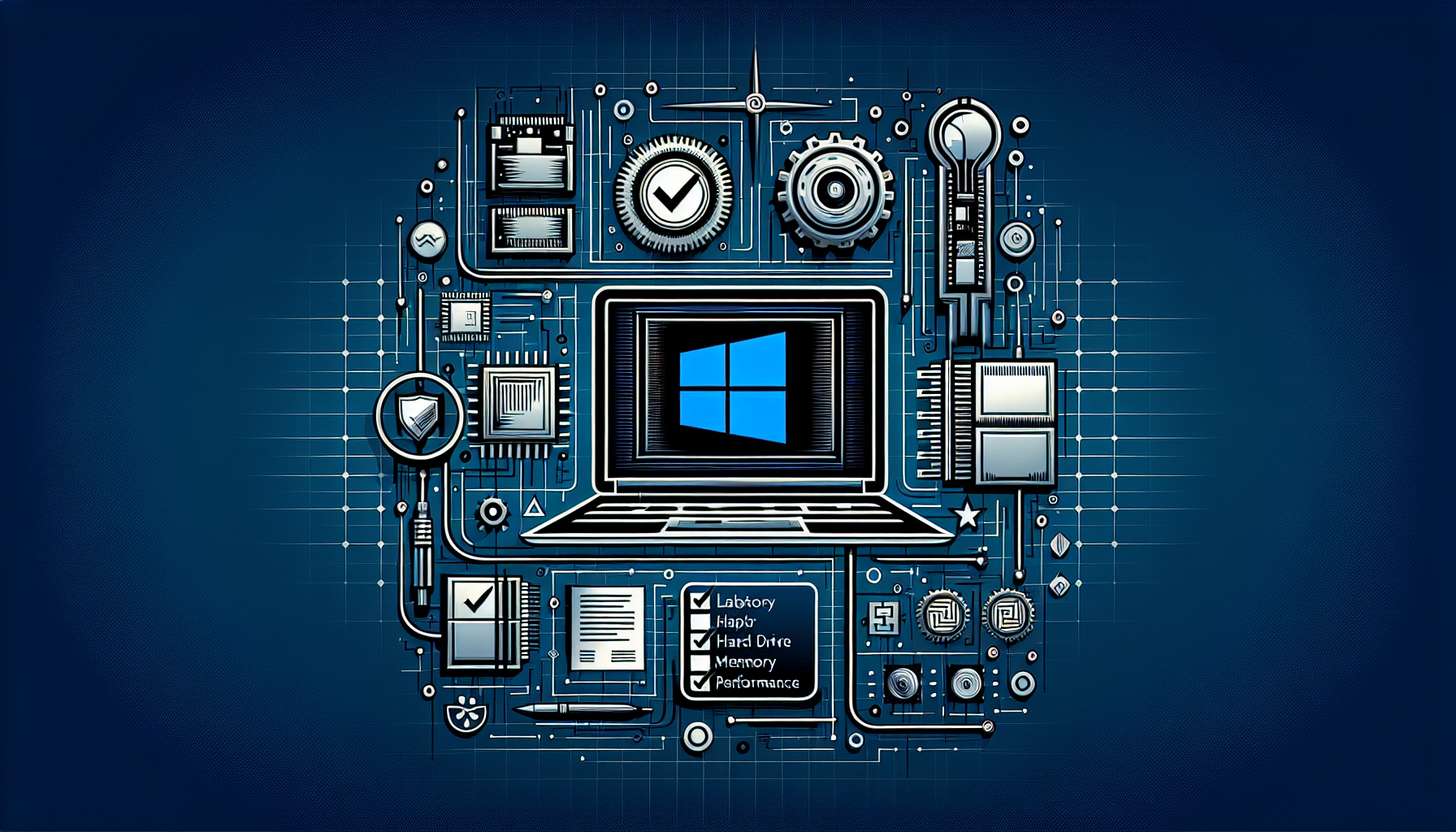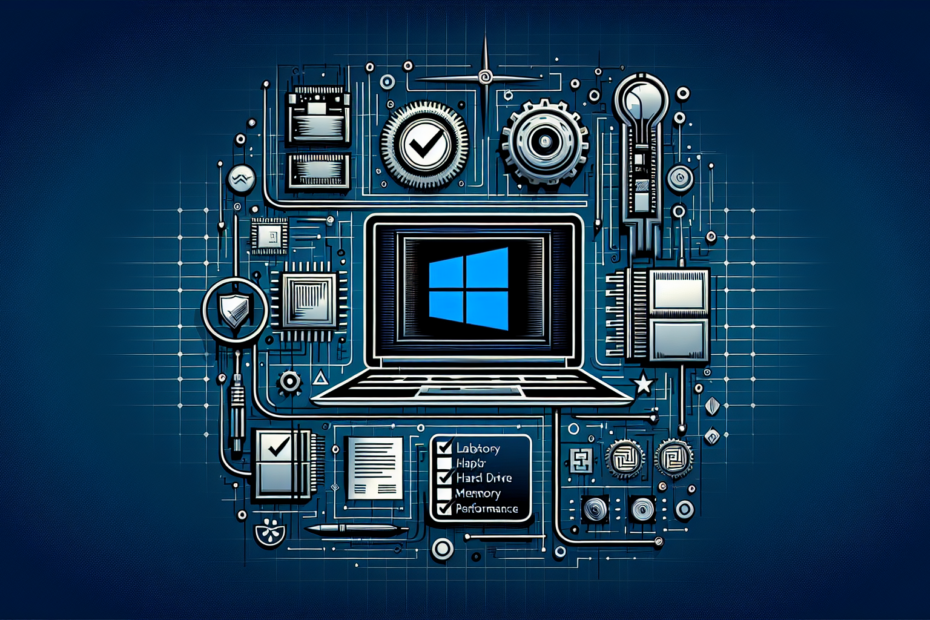







Are you wondering if Windows 10 is the right fit for your laptop? With the constant advancements in technology, it can be challenging to determine which operating system is best for your device. But fear not! In this article, we will explore the compatibility of Windows 10 with different laptop models. Whether you have an older or newer laptop, we will provide you with the information you need to make an informed decision. So sit back, relax, and let’s find out if Windows 10 is suitable for your laptop!

Minimum system requirements
Processor
Windows 10 requires a minimum of a 1 GHz or faster processor. This ensures that the operating system runs smoothly and efficiently on your laptop.
RAM
For optimal performance, your laptop should have at least 2 GB of RAM. Having enough RAM allows Windows 10 to handle multitasking and run applications seamlessly.
Storage
Windows 10 requires a minimum of 32 GB of storage space. This includes both the space needed for the operating system itself and additional space for updates, applications, and files.
Graphics card
To take full advantage of the visual enhancements and features of Windows 10, it is recommended to have a graphics card that supports DirectX 9 or later.
Screen resolution
Windows 10 supports a variety of screen resolutions, but a resolution of at least 800 x 600 pixels is recommended for a comfortable viewing experience.
Compatibility check
Windows 10 Upgrade Assistant
Before upgrading to Windows 10, you can use the Windows 10 Upgrade Assistant to check if your laptop meets the system requirements. This tool will analyze your current hardware and software configuration and provide recommendations for any necessary upgrades or compatibility issues.
Windows 10 Compatibility Center
The Windows 10 compatibility Center is another useful tool that allows you to browse a database of hardware and software to see if they are compatible with Windows 10. This can help you identify any potential compatibility issues before upgrading.
Manufacturer’s website
Checking the manufacturer’s website of your laptop can provide valuable information about Windows 10 compatibility. They may have specific drivers or updates available for your model that will ensure smooth operation with the new operating system.
Benefits of upgrading to Windows 10
Enhanced security features
Windows 10 offers improved security features, such as Windows Hello biometric authentication, Windows Defender Antivirus, and built-in ransomware protection. These features help protect your laptop and personal information from cyber threats.
Improved performance
Windows 10 is designed to be faster and more efficient than its predecessors. It boots up quickly, resumes from sleep mode instantaneously, and performs tasks more efficiently. This means that you can get things done faster and spend less time waiting for your laptop to respond.
New features and updates
Windows 10 introduces a range of new features and updates that enhance user experience. From the Cortana virtual assistant to the Microsoft Store for downloading apps, there are plenty of exciting additions that can improve your productivity and enjoyment of your laptop.
Better compatibility with modern software
As technology advances, software developers often focus their efforts on creating applications that are compatible with the latest operating systems. By upgrading to Windows 10, you ensure that your laptop is compatible with the latest software and can take advantage of new and innovative applications.
Considerations before upgrading
Hardware compatibility
Before upgrading to Windows 10, it is crucial to ensure that your laptop’s hardware is fully compatible. Some older hardware may not have the necessary drivers available or may not meet the minimum system requirements. Checking the compatibility of your laptop’s hardware can help avoid any compatibility issues.
Software compatibility
Similarly, you should check the compatibility of your current software with Windows 10. Some applications may not be supported or may require updates to work correctly. It is essential to ensure that the software you rely on will continue to function properly after upgrading.
Availability of drivers
Make sure that the necessary drivers for your laptop’s hardware components are available for Windows 10. Without compatible drivers, certain hardware functions may not work correctly or at all. Checking the manufacturer’s website for the latest drivers can help ensure a smooth transition to Windows 10.
Compatibility with peripherals
If you use external devices such as printers, scanners, or gaming controllers with your laptop, make sure they are compatible with Windows 10. Some older peripherals may not have updated drivers available, which could result in compatibility issues.

Should I upgrade to Windows 10?
Evaluate your laptop’s specs
Start by evaluating whether your laptop meets the minimum system requirements for Windows 10. If your laptop falls short in terms of processor speed, RAM, or storage space, you may experience performance issues with the operating system.
Determine your usage requirements
Consider how you use your laptop and whether Windows 10’s new features and updates align with your needs. For example, if you primarily use your laptop for basic tasks like web browsing and document editing, the new features may not be essential for you.
Assess the benefits and drawbacks
Weigh the advantages of upgrading to Windows 10, such as enhanced security and improved performance, against any potential drawbacks. It is essential to consider how the new operating system may impact your workflow and any potential learning curve.
Consider the lifespan of your laptop
Take into account the age of your laptop and how much longer you plan to use it. If your laptop is nearing the end of its usable lifespan, upgrading to Windows 10 may not be worth the investment. In contrast, if you plan to use your laptop for several more years, upgrading to a more modern operating system can be beneficial.
Preparing your laptop for Windows 10
Backup your data
Before upgrading to Windows 10, it is crucial to back up all your important files and data. This ensures that you have a copy of your data in case anything goes wrong during the upgrade process.
Free up disk space
Make sure your laptop has enough free disk space to accommodate the Windows 10 installation. Delete any unnecessary files or consider transferring them to an external storage device to create additional space.
Update drivers and software
Before upgrading, it is recommended to update all your laptop’s drivers and software to their latest versions. This can help minimize compatibility issues and ensure optimal performance with Windows 10.
Uninstall unnecessary programs
Take the time to uninstall any programs or applications that you no longer use or need. Removing unnecessary software can help improve system performance and create a cleaner environment for the Windows 10 upgrade.
Steps to upgrade to Windows 10
Download Windows 10
Visit the Microsoft website and download the Windows 10 installation file. Follow the on-screen instructions to save the file to your laptop’s local storage.
Create installation media
Once you have the Windows 10 installation file, you will need to create installation media. This can be a USB drive or a DVD, depending on your preference and the available options on your laptop.
Run the installation process
Insert the installation media into your laptop and restart your system. Follow the prompts to start the Windows 10 installation process. During the installation, you may be prompted to make decisions regarding settings and personal preferences.
Common issues and troubleshooting
Incompatible drivers or software
If you encounter issues with incompatible drivers or software after upgrading to Windows 10, visit the manufacturer’s website to find the necessary updates or patches. It is also a good idea to check for updated drivers and software regularly to ensure smooth operation.
Activation issues
Occasionally, there may be activation issues when upgrading to Windows 10. If you encounter activation errors, contact Microsoft support for assistance. They can guide you through the activation process and troubleshoot any issues you may be experiencing.
Performance issues
If you notice a decrease in performance after upgrading to Windows 10, try optimizing your system by closing unnecessary applications, disabling unnecessary startup programs, and performing regular system maintenance tasks such as disk cleanup and defragmentation.
Compatibility with peripherals
If you experience compatibility issues with peripherals, such as printers or external devices, visit the manufacturer’s website to check for updated drivers or contact their support for assistance. In some cases, you may need to replace outdated peripherals with newer, Windows 10 compatible versions.
Alternatives to Windows 10
Windows 7 or 8.1
If your laptop does not meet the minimum system requirements for Windows 10 or if you prefer to stick with an earlier version of Windows, you may consider upgrading to Windows 7 or Windows 8.1. These versions are still supported and compatible with a wide range of software and hardware.
Linux-based operating systems
Another alternative to Windows 10 is to switch to a Linux-based operating system. Linux offers a variety of distributions, such as Ubuntu and Fedora, that are free and open-source. These operating systems are known for their stability, security, and customization options.
macOS
If you are open to exploring other operating systems, upgrading to a Mac and using macOS can be an option. Macs offer a seamless and user-friendly experience, with a wide range of software and hardware compatibility. However, it is important to note that Macs come with a higher price tag compared to Windows-based laptops.
Conclusion
Make an informed decision
When deciding whether to upgrade to Windows 10, it is essential to gather all the necessary information and consider your specific needs and circumstances. Review the minimum system requirements, assess the benefits and drawbacks, and evaluate the compatibility of your laptop’s hardware and software.
Consider upgrade costs and benefits
Upgrading to Windows 10 may come with additional costs, such as purchasing new hardware or software. It is important to weigh the potential benefits of the upgrade against the associated costs to determine if it is a worthwhile investment.
Evaluate long-term viability
Consider the lifespan of your laptop and how long you plan to use it. If you believe your laptop has a few more years of usability, upgrading to Windows 10 can provide you with an up-to-date operating system that supports modern software and improved security features.
In the end, the decision to upgrade to Windows 10 ultimately depends on your specific situation and preferences. By following the outlined considerations and steps, you can make an informed decision that ensures the best possible experience with your laptop’s operating system.






